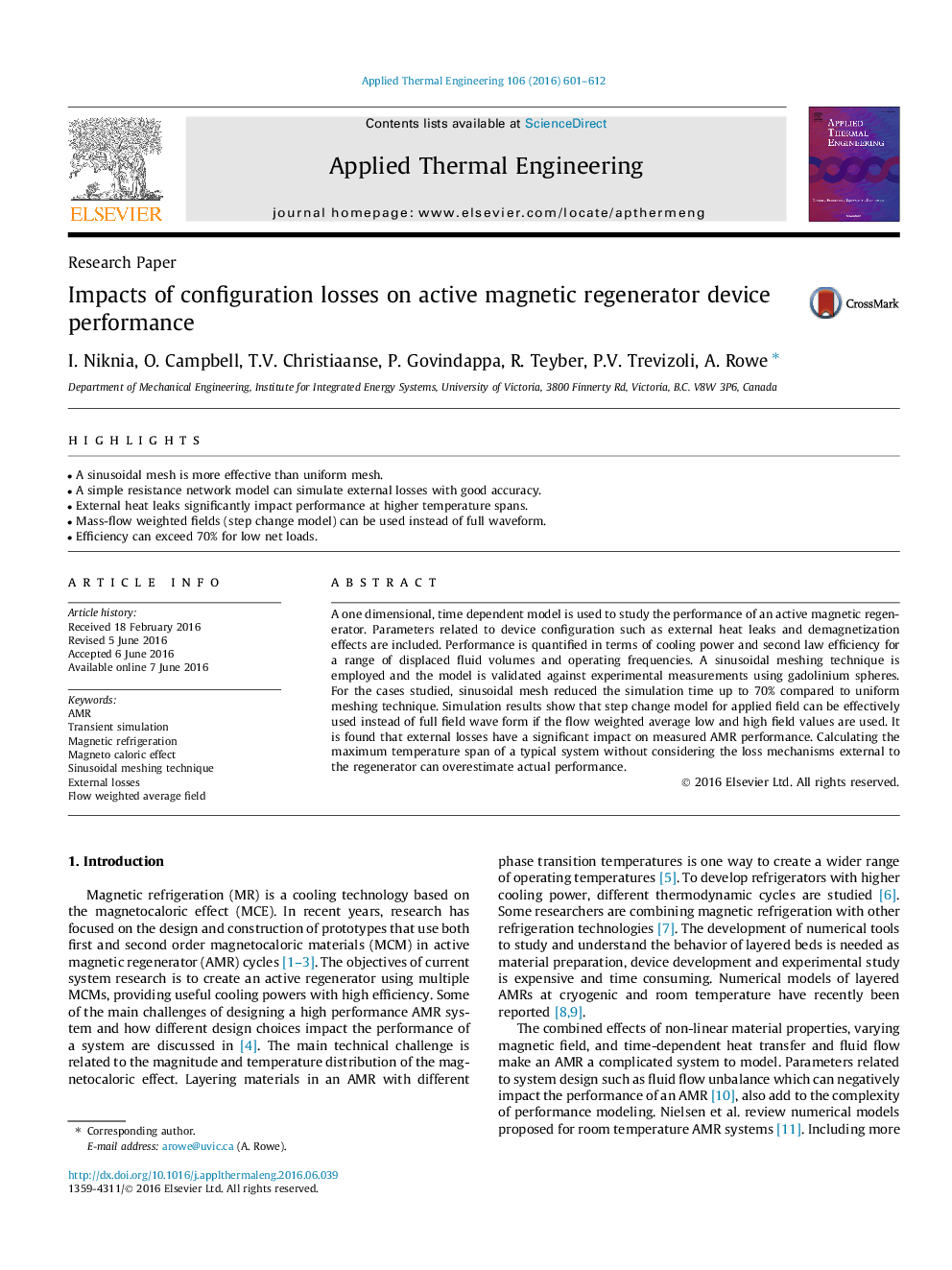| Article ID | Journal | Published Year | Pages | File Type |
|---|---|---|---|---|
| 7047456 | Applied Thermal Engineering | 2016 | 12 Pages |
Abstract
A one dimensional, time dependent model is used to study the performance of an active magnetic regenerator. Parameters related to device configuration such as external heat leaks and demagnetization effects are included. Performance is quantified in terms of cooling power and second law efficiency for a range of displaced fluid volumes and operating frequencies. A sinusoidal meshing technique is employed and the model is validated against experimental measurements using gadolinium spheres. For the cases studied, sinusoidal mesh reduced the simulation time up to 70% compared to uniform meshing technique. Simulation results show that step change model for applied field can be effectively used instead of full field wave form if the flow weighted average low and high field values are used. It is found that external losses have a significant impact on measured AMR performance. Calculating the maximum temperature span of a typical system without considering the loss mechanisms external to the regenerator can overestimate actual performance.
Related Topics
Physical Sciences and Engineering
Chemical Engineering
Fluid Flow and Transfer Processes
Authors
I. Niknia, O. Campbell, T.V. Christiaanse, P. Govindappa, R. Teyber, P.V. Trevizoli, A. Rowe,
